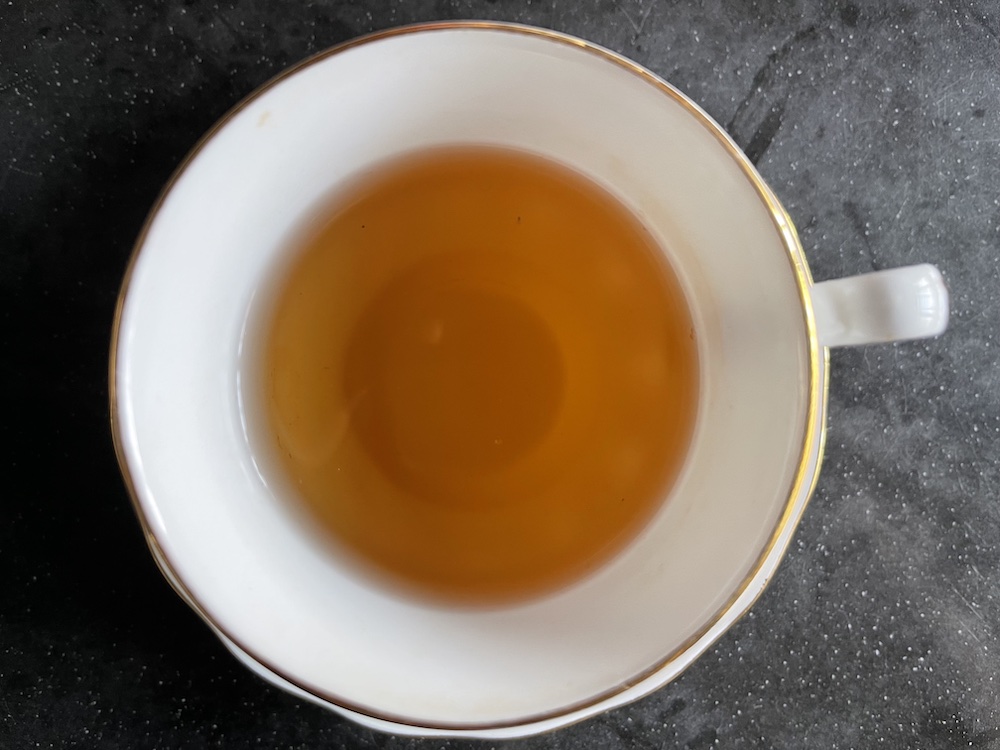Picture this, I’m at Delhi International Airport, extremely tired because I didn’t realise that weddings in India last till 3am and I booked a 8am flight (we went straight from wedding venue to hotel just to pick up our bags and to the airport). There’s only one more flight home and in my sleep-deprived mind, I’m thinking about… tea.
Specifically, that it would be easier to buy tea as souvenirs for the office (and any extras could be drunk by me). So instead of looking for a tea shop, I decide to just look around the duty free area, and that’s when a very friendly salesman tells me: “If I were buying for my friends, I would buy this brand, but if I wanted something better for myself, I would get this.”
Reader, I bought the tea.


(I mean, how can I not when it says “Grand Cru” and comes in a velvet pouch?)
Well, I bought both types – one box of individual tea bags to give away and one bag of loose leaf darjeeling tea for me to enjoy. So here is a rare tea review post, because I’ve really not had much Darjeeling (like, I’ve had it in hotels and that’s about it) so I want to note it down.
First Impressions

The dry leaves look very tiny (promising, does it mean they are the small leaves?). The leaves are mostly dark brown with some lighter bits (buds?) mixed in. It smells like a lighter version of a black tea, if that makes sense.
Tasting Notes

The insert for this tea asked me to steep for three to five minutes, but I think you know that’s not how I made this tea. I’m stubborn so I kept to my usual steeping habits – for the first cup, it was about 30 seconds with hot but not boiling water (I was worried the leaves were too delicate for boiling water). The tea was caramel brown but without much sent. In terms of taste, it was very light and smooth, which made me realise that I definitely needed to steep it longer. Not three minutes, perhaps, but longer.

For the second cup, I steeped the leaves for 45 seconds with even hotter water (still not boiling). The tea liquor was even darker and there was a hint of a sweet smell as well. The tea was sweet and smooth with some woody notes. The tag says that this tea has a “refreshing citrus fruit notes with a buttery nose” and I can understand why they said it (buttery because of the smoothness and it’s light enough that it could pass as fruity), but honestly that would not be the first description that came to mind.

For the third cup, I steeped it for 1 minute and I found it to be very similar to the second, only that a bitter note was present.

The spent leaves were a bit disappointing because I could see that the dry leaves weren’t tiny because they were the top leaf, it was because the leaves were broken, probably during the rolling process.
Overall Thoughts
Since that first cup, I’ve had the chance to drink this tea as a morning tea quite a few times. It’s a pretty good tea to start the day, but mostly because it’s a straightforward tea – I find it somewhat sweet and woody, light enough that it’s not a shock to the system. It reminds me a lot of some Japanese black teas, actually, in the way that they can be lighter and more ephemeral (but sadly, not to the unique floral aspect that I’ve had from cultivars like Benifuuki or Yumewakaba). My preferences still lies towards the richer Chinese teas or perhaps even the more malty Assam blacks that go well with milk, but this is not a bad tea (as long as I don’t think too much about how much I paid for it relatively to other black teas I enjoy more).

Sometimes it’s worth paying a little bit more just for the experience of trying something new!
Yes for sure!
[…] my previous tea post, I talked about the San-Cha Darjeeling tea that I had bought on my trip to India (all the way back in July). But after writing it, I realised […]